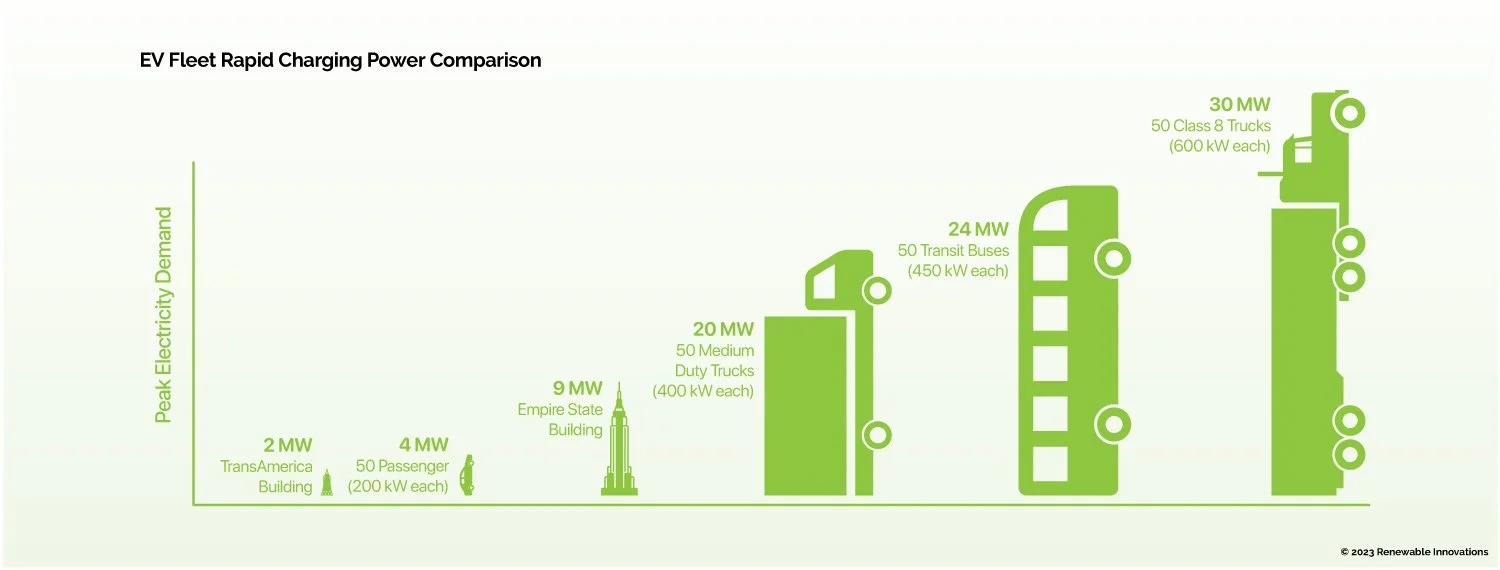Why Hydrogen is the answer to rapid EV charging - Part One
Rapid DC fast charge powered with hydrogen allow you to recharge any EV more quickly - and it can be anywhere
20 min TO FULL CHARGE
Electric vehicle ownership is increasing globally and our expectation as customers is to be able to recharge as fast as a standard fuel vehicle. The standard low level domestic charging system is low power and very slow.
A popular view of modern technology is that over time these items will become cheaper to purchase, smaller, lighter, more efficient, and in the case of EVs, to hold more charge and recharge more quickly. History shows us that these things are indeed likely to happen, but today’s reality is that we don’t have the power capacity and availability to recharge all the EVs we currently have let alone an increased number. Herein lies the problem.
The power needed to charge a growing ecosystem of EV powered vehicles is significant.
The Grid Gap
In the past, the power o ffered to consumers through the electricity grid network was available at a minimal level compared to the current need. The energy demands were generally well met with their adequate supply.
Today, there are more consumers and consumer needs in which peak demand is higher than the grid capacity. When demand is greater than supply this creates a shortfall, an incapacity, or a gap in the networks ability to deliver. We call this the Grid Gap™.
As this Grid Gap, increases there will be major challenges in meeting our day-to-day needs and expectations.
Grid Ability Versus Availability
The power battle is between the ability our power grid network has to produce electricity and the availability of delivery where needed. Domestic and business energy consumers are the casualties of this battle.
Some scenarios include:
Utility has the ability to produce but can’t get the energy to its consumers.
Utility does not have the ability and there are no options for the consumer.
The Hydrogen Solution
The above is a very simplified discussion of the energy challenges faced today, but out of it comes an exciting opportunity for hydrogen.
Hydrogen power solutions can provide power in places currently hard to service by the energy retailers without environmental impacts or availability issues.
Hydrogen power solutions can also deliver the high power needed for EV RAPID charge stations regardless of location, while also providing grid support and facility backup power.
Plus, the source of energy – hydrogen – can be created with excess grid power and very effectively stored for future grid energy needs.
Using hydrogen as the power source, and leveraging hydrogen Fuel Cells to drive the system, our EV charging times are truly RAPID.
Scaling EV charging
Our goal at Renewable Innovations is to power our new EV world with clean, green, anywhere power. With each leap in EV adoption comes a similar requirement for an exponential leap in power. This diagram serves to illustrate and remind that as more and more vehicles are electrified, the scale of power increases - not just numbers of vehicles but the power draw as well.
Our anytime, anywhere power systems solve both the Grid Gap and the EV charging scale challenges. With our drop-and-go systems, no infrastructure is required. Plus the units can be grid-connected and also can provide primary power, whether to a convenience store or a data center. That means EV charging can be green and anywhere, which will ease the burden on our utility infrastructure and help ensure that EV drivers can take their cars anywhere.
Learn more about our family of power systems and check out our new Behind-The-Scenes at the Rebelle Rally where we took EV charging to the desert!



